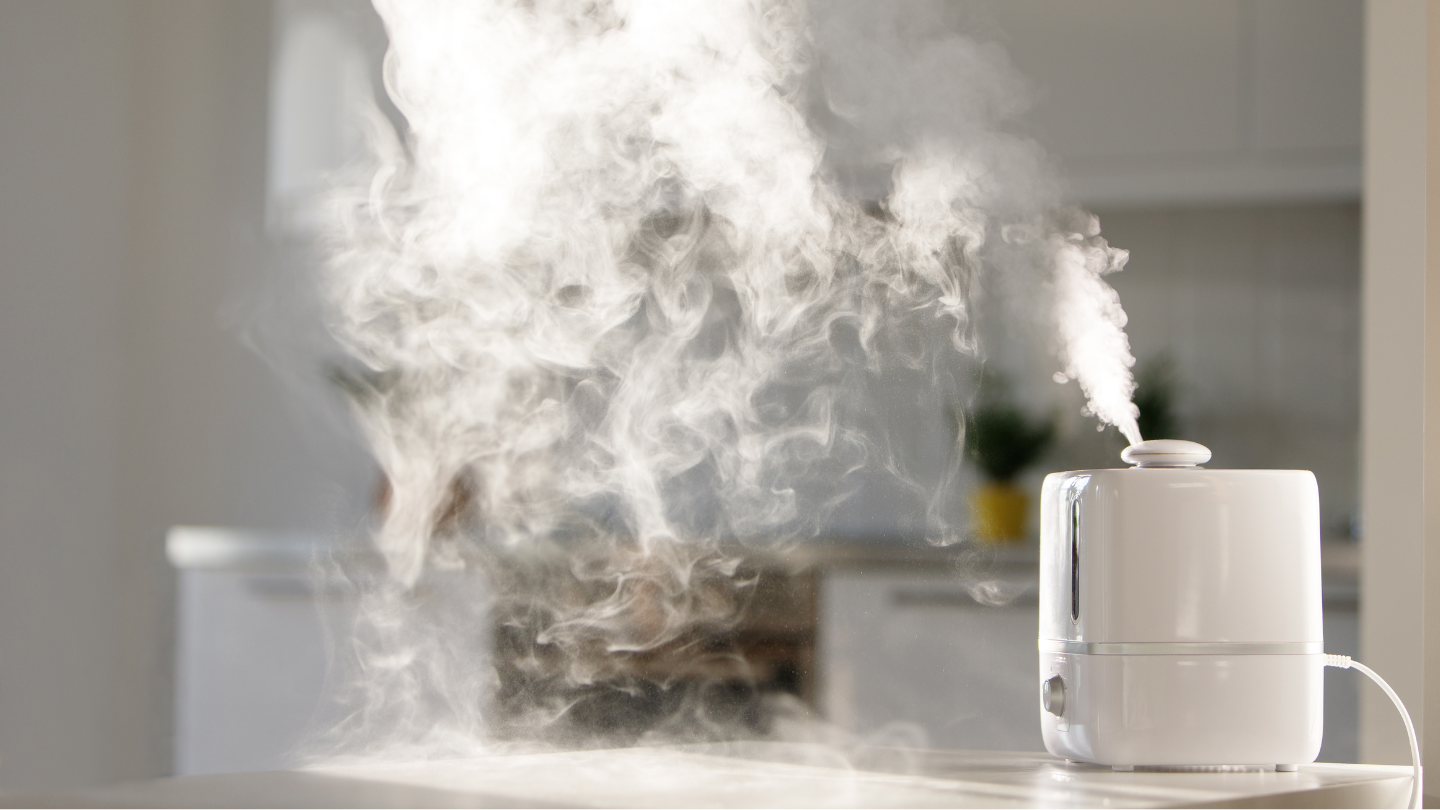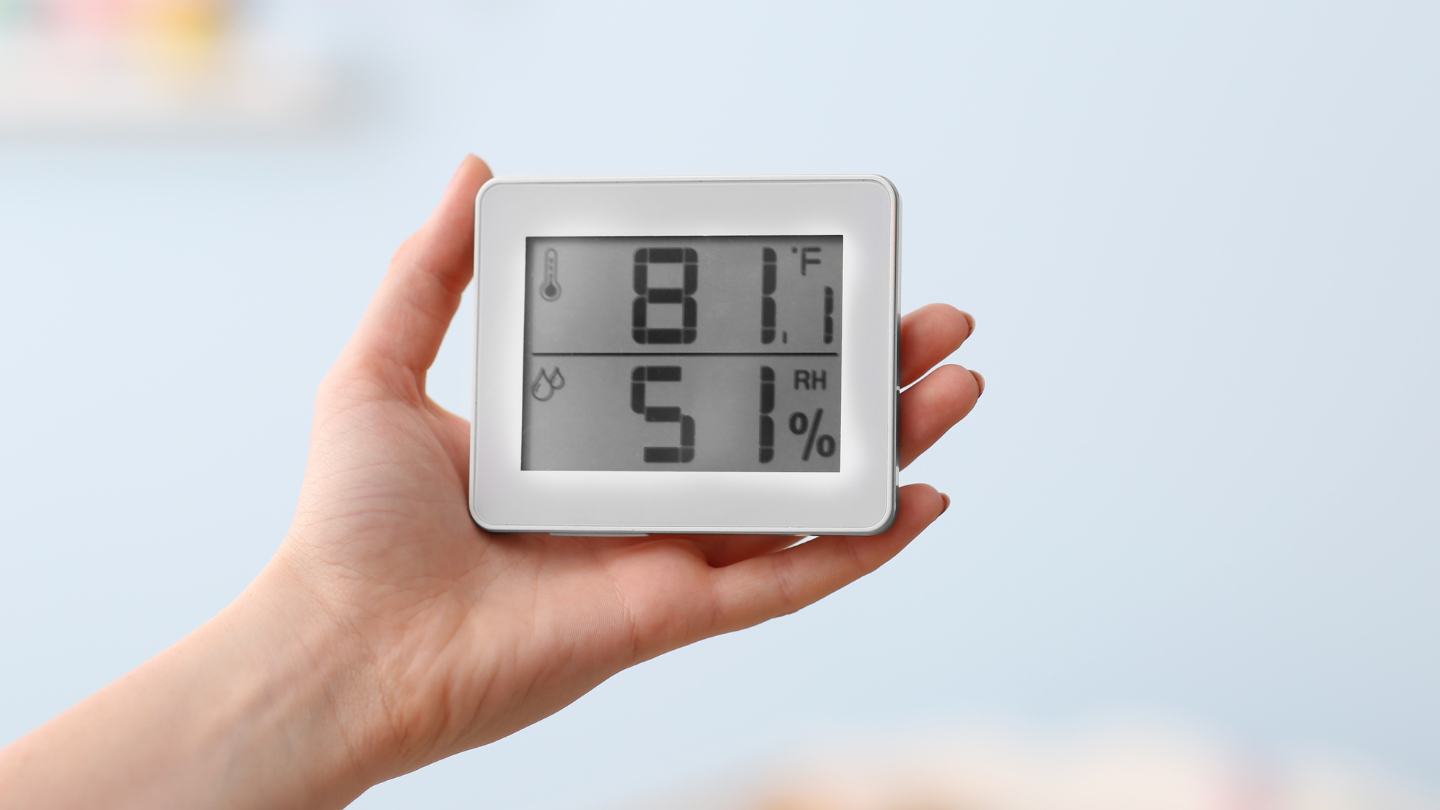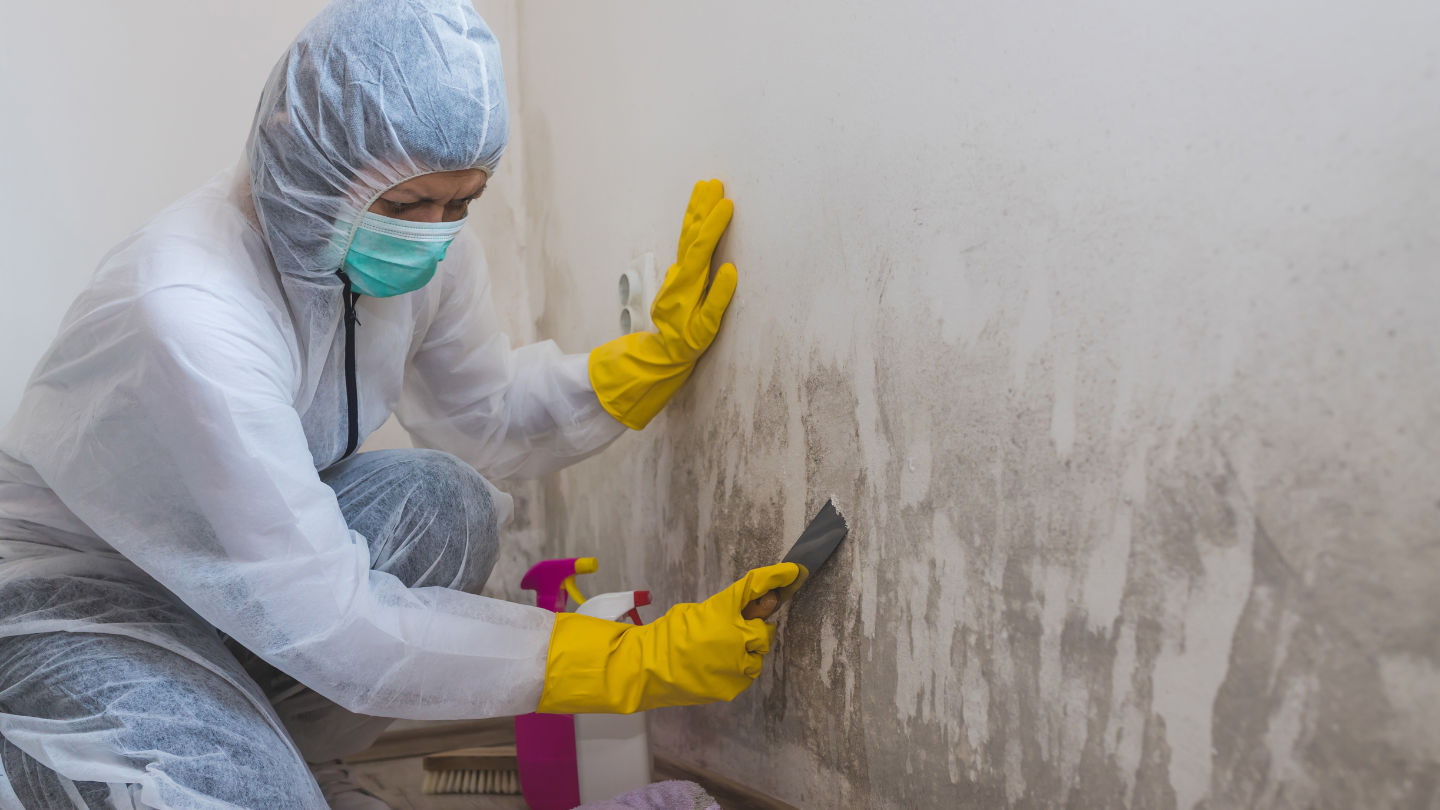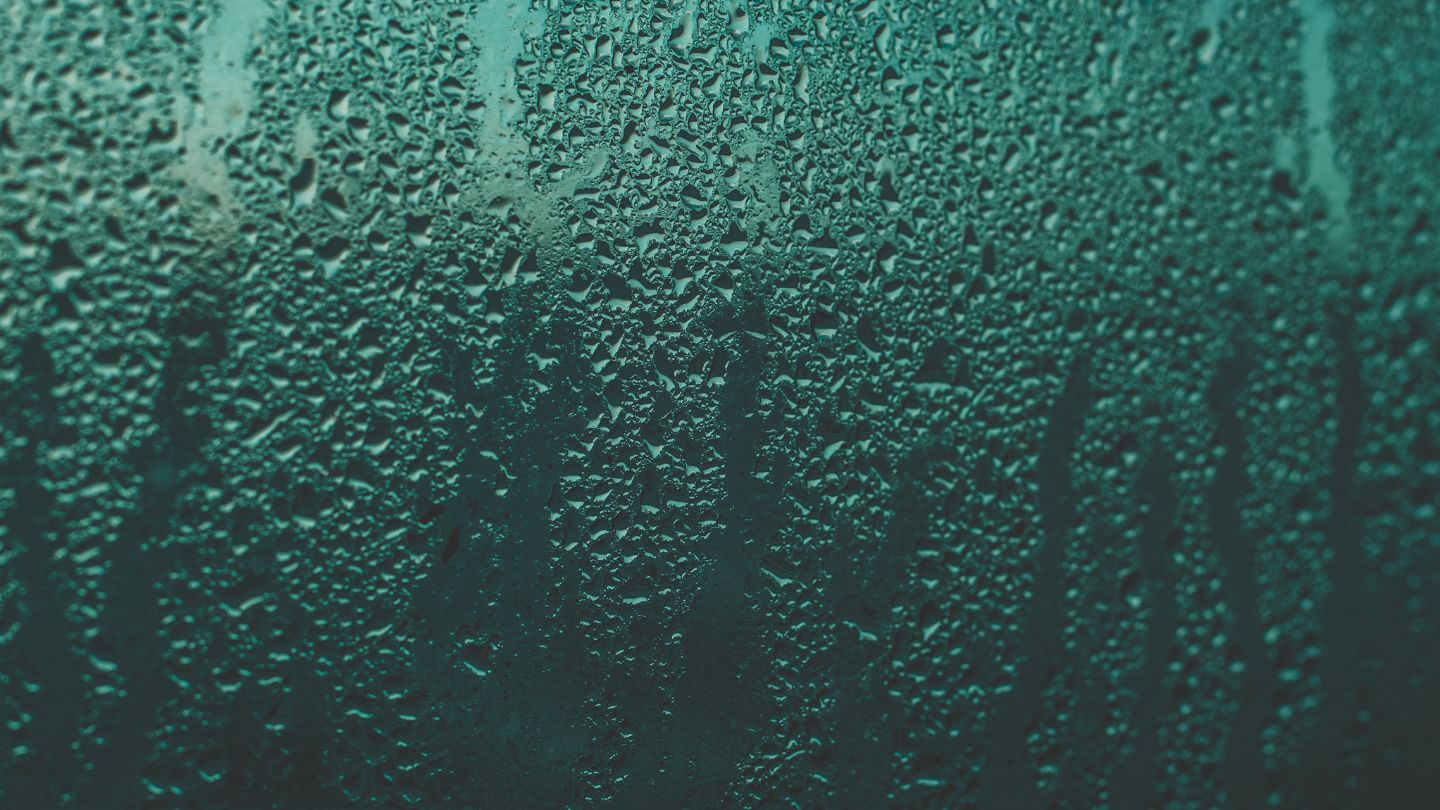Humidifiers can make indoor air more comfortable but may also cause mold if not properly monitored. They can alleviate issues associated with dry air, such as discomfort and aggravated cold and allergy symptoms. This raises the question: do humidifiers cause mold monitoring indoor air quality? Monitoring indoor air quality is crucial to avoiding mold issues. In this blog, you’ll learn how humidifiers affect air quality, why monitoring humidity levels is important, and how to prevent mold growth.
Key Takeaways
- Maintaining indoor humidity between 40% and 60% is crucial to prevent mold growth and ensure good air quality.
- Regular maintenance and cleaning of humidifiers, including using distilled water and proper placement, are essential to avoid mold issues.
- Monitoring humidity levels with a hygrometer allows for timely adjustments, minimizing the risk of mold growth and creating a healthier indoor environment.
How Humidifiers Impact Indoor Air Quality
Humidifiers can significantly enhance comfort by alleviating the dryness associated with cold or flu symptoms. However, introducing moisture into your indoor environment also necessitates careful management. Whole-home humidifiers, for example, require precise regulation of humidity levels to prevent mold infestations.
Each type of humidifier impacts indoor air differently. Portable humidifiers, while effective for targeted relief from dry indoor air during winter months, can increase condensation issues that might lead to mold if left unchecked. While pairing an air purifier with a humidifier can improve air quality, it’s crucial to monitor moisture levels regularly to avoid creating conditions conducive to mold growth.
To prevent mold spores from thriving, it is essential to maintain indoor humidity levels between 40% and 50%. Humidity levels exceeding 55% may lead to significant mold proliferation, potentially causing structural and health issues. Professional technicians can provide expert evaluations of your home’s humidity levels and recommend solutions tailored to your specific needs, ensuring your indoor air remains safe and comfortable year-round.
Understanding Mold Growth
Mold growth is a widespread problem in homes. It thrives in high-humidity environments with poor ventilation. Moisture is the primary catalyst for mold development, and common sources include leaking roofs, condensation from humidifiers, and hidden plumbing leaks. Left unchecked, mold can start growing in as little as 24 to 48 hours.
Mold thrives on organic materials like drywall, carpets, and furniture, and it can spread to hidden areas such as behind walls or under flooring. While improper use of humidifiers can exacerbate the problem, professional mold prevention services can identify and address these risks.
Mold spores in the air can pose significant health risks, particularly for individuals with respiratory issues or allergies. Mold spores released from humidifiers can settle on:
- walls
- furniture
- carpets
- clothes
This can lead to visible mold growth and potential health hazards. Certified specialists can assess potential problem areas, recommend ventilation improvements, and ensure that any existing mold is effectively remediated to protect your health and property.
Ideal Humidity Levels to Prevent Mold
Maintaining indoor humidity within the ideal range of 40% to 60% is critical to reducing the risk of mold growth. Regular monitoring with a hygrometer can provide accurate readings, enabling timely adjustments to maintain these levels. While monitoring tools are useful, professional services can provide a more comprehensive solution. Experts can assess your entire home for humidity imbalances, recommend advanced humidity control systems, and ensure proper installation and maintenance to achieve long-term results.
Types of Humidifiers and Their Risks

Humidifiers come in various types, each with its benefits and risks. The three most common types are cool mist, ultrasonic, and steam vaporizers. While cool mist humidifiers are effective at adding moisture to the air, they can lead to increased mold growth if not properly monitored. Ultrasonic humidifiers, known for their comfort-enhancing mist, also pose a mold risk if humidity levels are not kept in check.
Steam vaporizers effectively neutralize microorganisms but produce very hot steam, which can be unsafe for children and pets. Evaporative humidifiers can inadvertently release excessive moisture, raising mold risks, especially for asthma sufferers. Regular maintenance is crucial for all humidifier types, including a steam humidifier, to prevent the release of harmful biological pollutants into the air.
Impeller humidifiers, a type of cool mist humidifier unit, can produce mineral residues and introduce microorganisms into the air if not maintained properly. Humidifier tablets can help prevent mold growth and scale accumulation, but regular cleaning and maintenance are still essential for all humidifier types.
Choosing the right humidifier for your home involves considering both benefits and risks. Proper maintenance and regular cleaning ensure your humidifier contributes positively to indoor air quality without causing mold issues.
Monitoring Indoor Humidity Levels

It is critical to monitor the humidity in your home to safeguard against health hazards and potential damage to your property. A hygrometer plays a crucial role in maintaining ideal moisture levels. Positioning a hygrometer in main areas of activity, like bedrooms or living rooms, can provide precise humidity measurements that enable prompt adjustments.
Regularly monitoring indoor humidity allows you to fine-tune the settings on your humidifier as needed, forestalling any buildup of undue moisture that could lead to mold proliferation. This diligent monitoring not only defends the structural integrity of your residence but also promotes well-being among its occupants.
By vigilantly observing and managing moisture levels indoors, you can foster an environment conducive to comfort and safety and effectively circumvent complications tied to elevated humidity and subsequent mold development.
Preventing Mold Growth in Humidifiers
Professional maintenance and assessment are essential to prevent mold growth in humidifiers and maintain a healthy indoor environment. Regular cleaning and proper operation are vital, but these measures alone may not be enough to ensure long-term prevention. A professional service can inspect and clean your humidifier system, using advanced tools and techniques to remove any existing mold and eliminate risks.
Certified technicians can also recommend upgrades to your humidifier system, such as units with built-in antimicrobial features or systems designed for optimal moisture control. With their expertise, they ensure your humidifier operates efficiently and safely, contributing to a mold-free indoor environment.
Regular Cleaning Practices
Instead of relying on frequent DIY cleanings with household solutions, consider having your humidifier professionally serviced. Professionals utilize advanced cleaning agents and equipment to sanitize your humidifier thoroughly, ensuring no mold spores are left behind. They can also assess the overall air quality and identify potential risks that might not be apparent during routine cleaning. Regular professional cleanings provide long-lasting results, reducing maintenance efforts and ensuring healthier indoor air quality.
Using Distilled Water
Employing distilled or demineralized water in humidifiers significantly diminishes the accumulation of mineral deposits. Given that distilled water is less concentrated with minerals compared to regular tap water, it lowers the chances for mold growth while simultaneously maintaining cleanliness within the humidifier.
Choosing either distilled or demineralized water aids in thwarting the proliferation of mold and secures optimal functionality of your humidifier, thereby supplying fresh and salubrious moisture into your indoor air environment.
Optimal Placement and Usage
Positioning your humidifier correctly is crucial in warding off mold on adjacent surfaces. Keep the device at a distance from draperies, rugs, and various other surfaces that might foster mold proliferation to hinder mold growth.
Ensuring your humidifier is situated in a spot with ample fresh air flow helps stave off moisture buildup on any surface, thereby promoting a wholesome ambiance within the room.
Professional Solutions for Mold Prevention

If you suspect mold growth in your humidifier or elsewhere in your home, professional assistance is vital. Experts can conduct detailed mold inspections, using advanced tools to detect hidden mold growth and identify the root causes of excess moisture. Once identified, they implement tailored remediation strategies, ensuring mold is safely and effectively removed.
In addition to removing mold, professionals can provide long-term solutions to prevent recurrence, such as recommending proper ventilation systems, advanced humidity controls, and regular maintenance plans. Trusting trained specialists ensures your home is safeguarded against mold-related risks and remains a safe, healthy environment.
Summary
Maintaining ideal humidity levels and using humidifiers correctly are essential steps to preventing mold growth and ensuring a healthy indoor environment. While routine cleaning and proper operation can mitigate risks, expert intervention is often necessary to address hidden threats and provide comprehensive, long-term solutions. By identifying potential issues, monitoring humidity, and implementing tailored strategies, professionals help protect your home and health from mold-related concerns.
At Mold-B-Gone, your trusted mold removal specialist near Atlanta, we specialize in mold testing, remediation, and prevention to ensure your home remains safe and your indoor air quality pristine. Let our dedicated team handle the challenges of mold removal with precision and care. Contact us today and take the first step toward a healthier living space!
Frequently Asked Questions
1. Can a humidifier cause mold even if I clean it regularly?
Yes, even with regular cleaning, improper humidity levels or poor ventilation in your home can create an environment conducive to mold growth. It’s essential to monitor indoor humidity and use a hygrometer for accurate control.
2. What is the best way to monitor humidity levels in my home?
The most effective way to measure and track indoor humidity is to use a hygrometer. Smart thermostats with built-in humidity sensors can also help regulate levels automatically.
3. How quickly can mold grow if humidity is too high?
Mold can develop within 24 to 48 hours in high-humidity conditions. Reducing moisture levels immediately can prevent mold from spreading.

